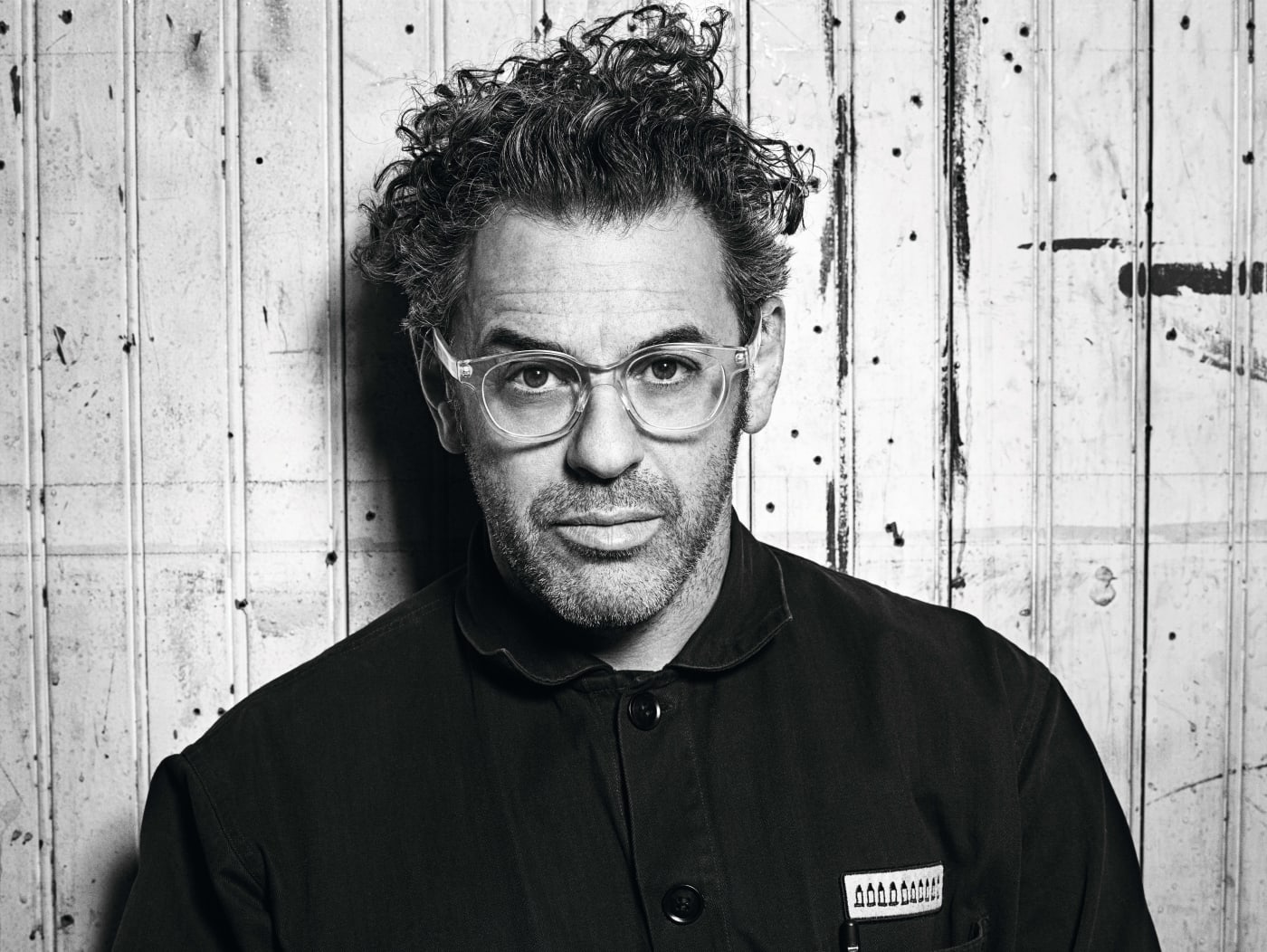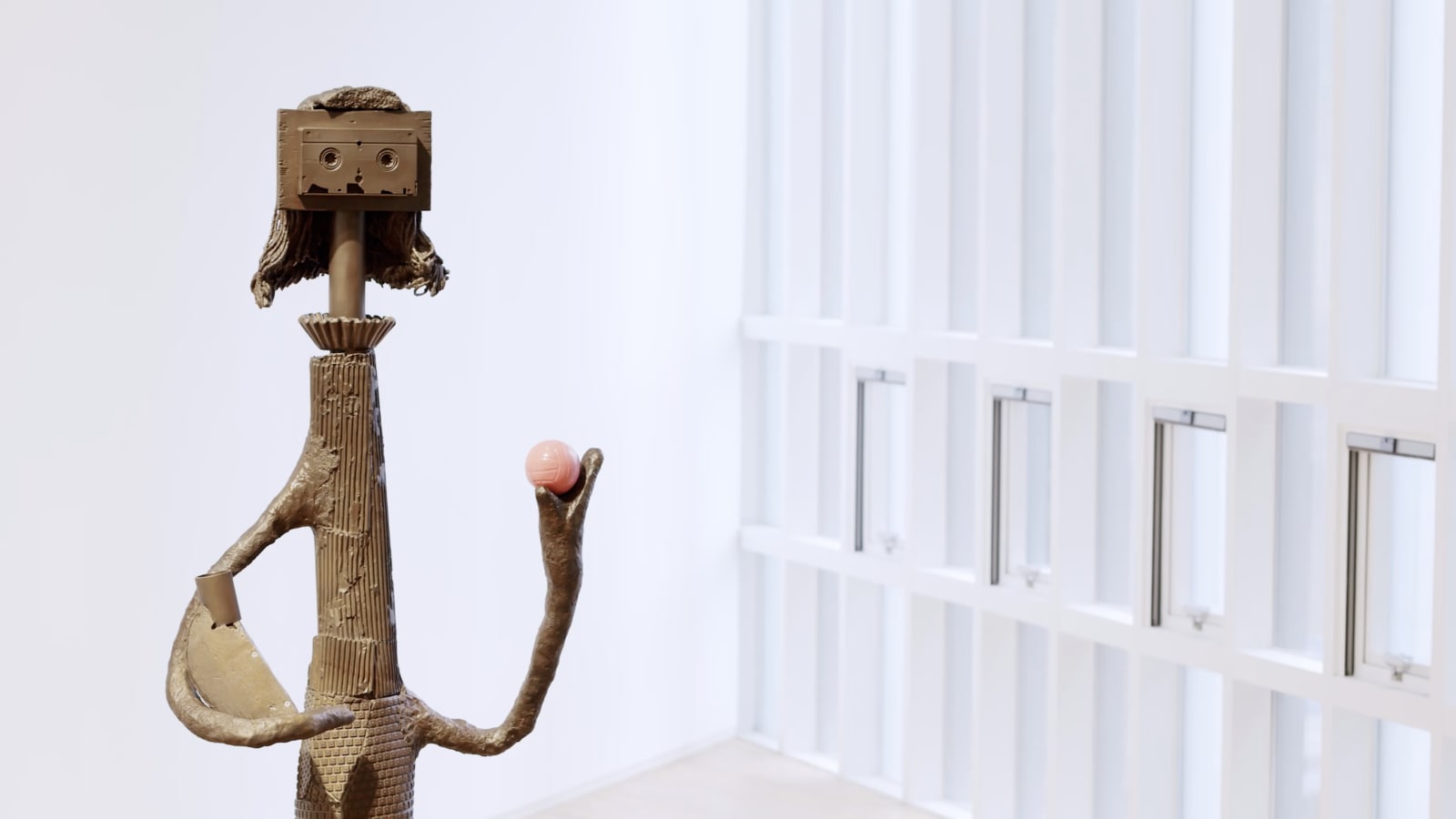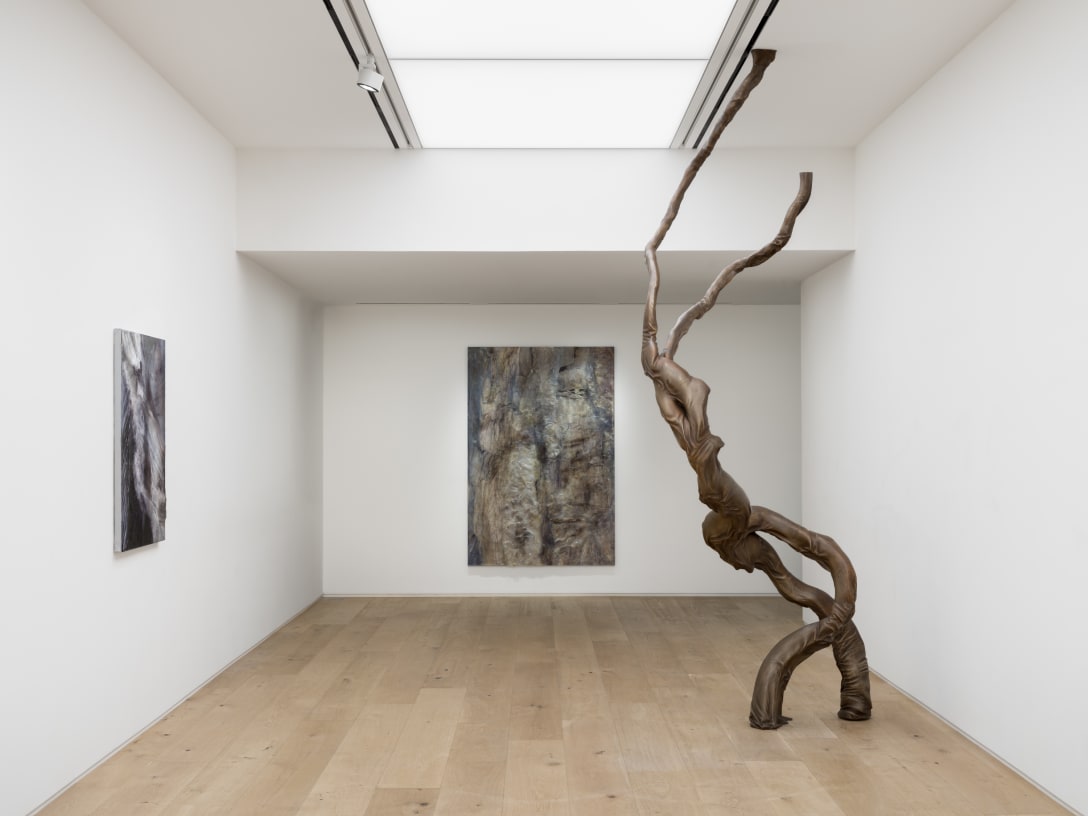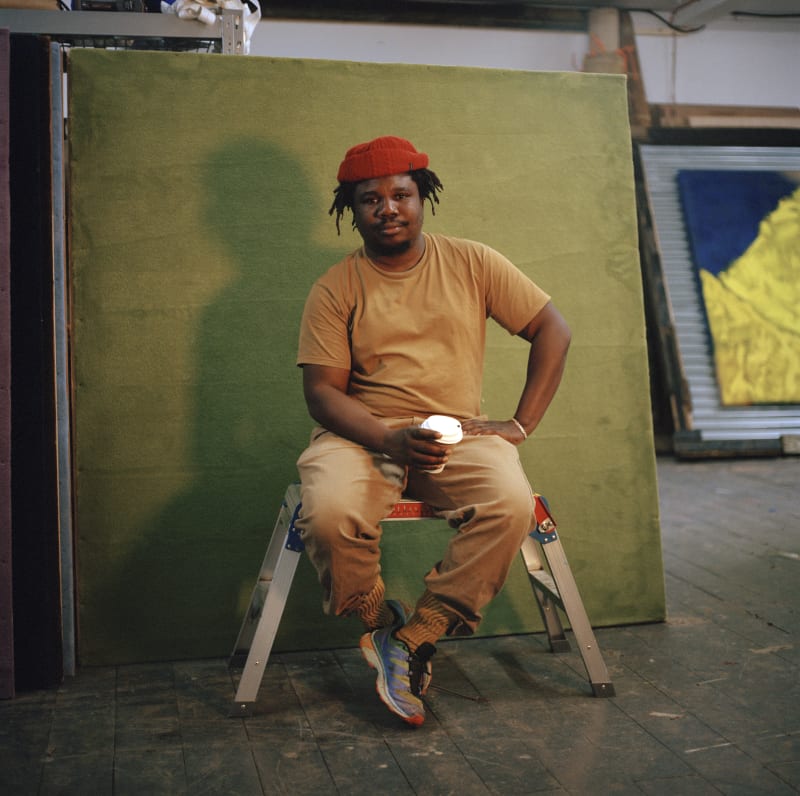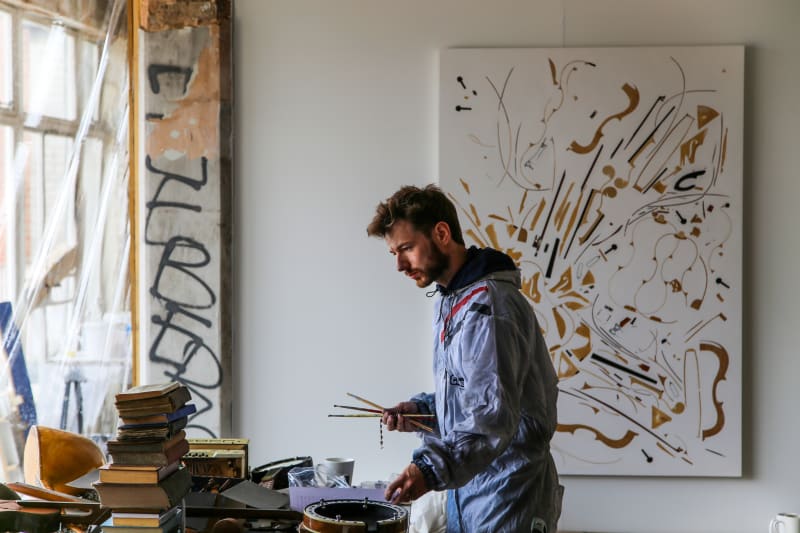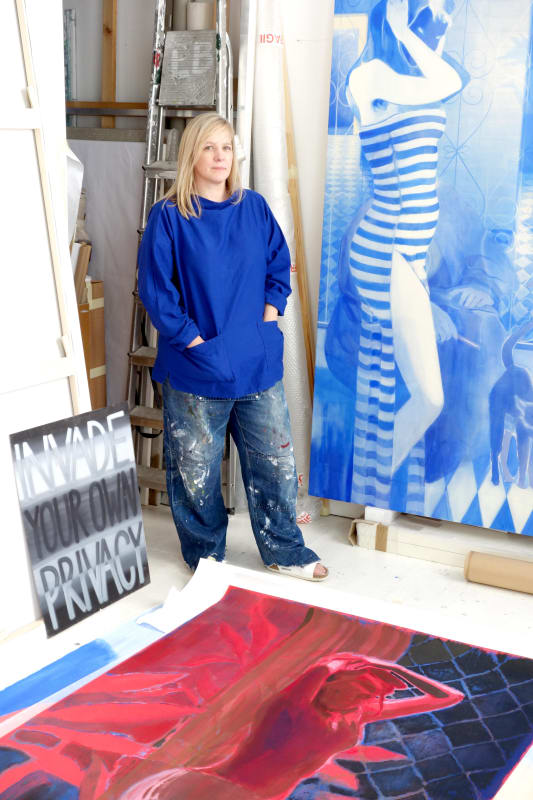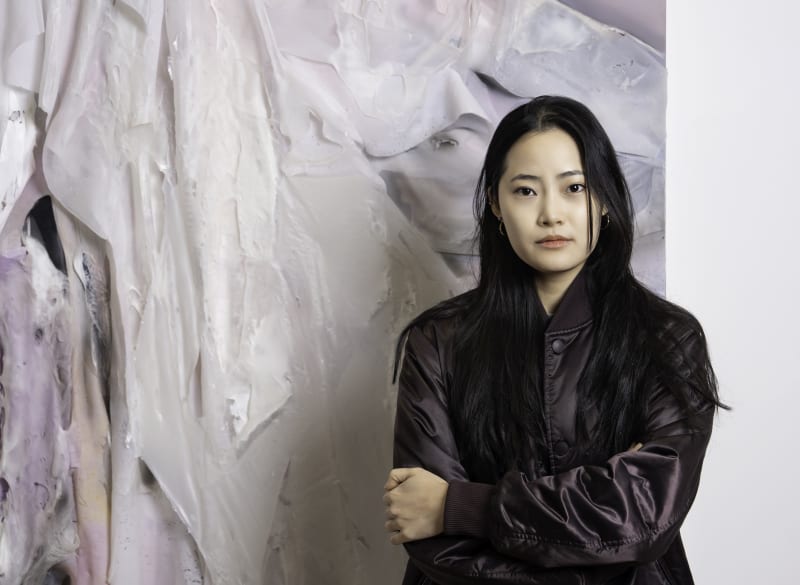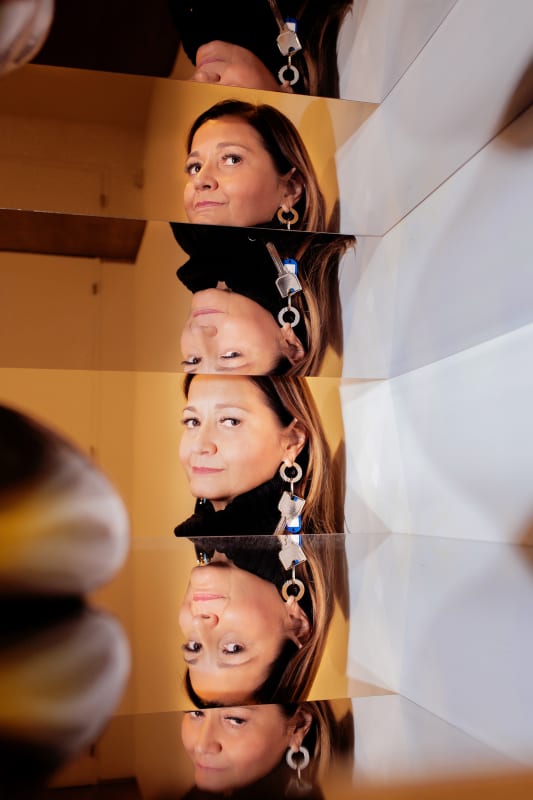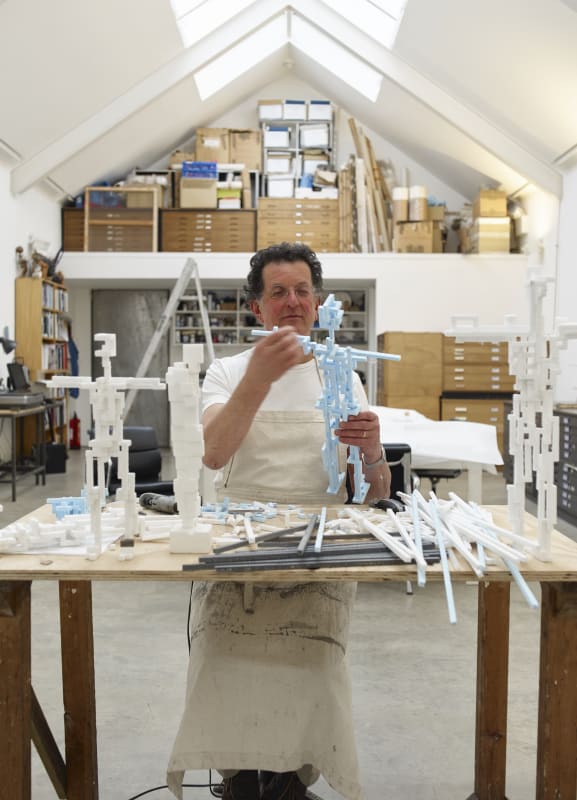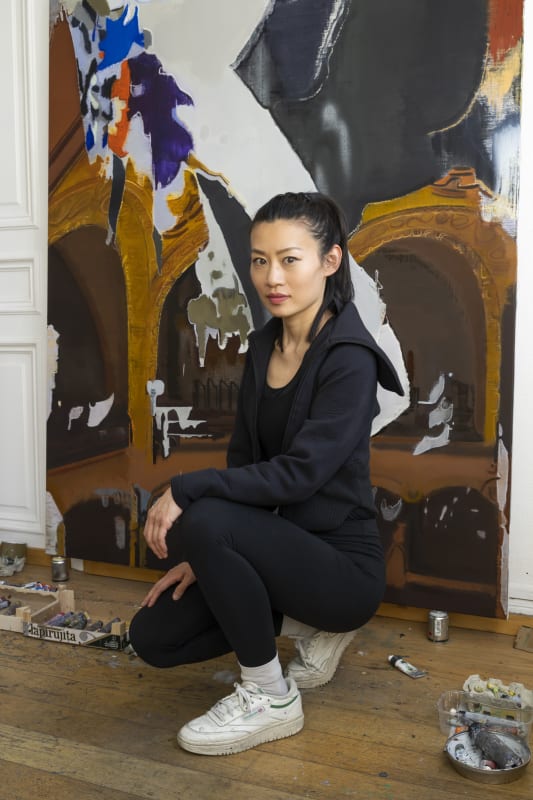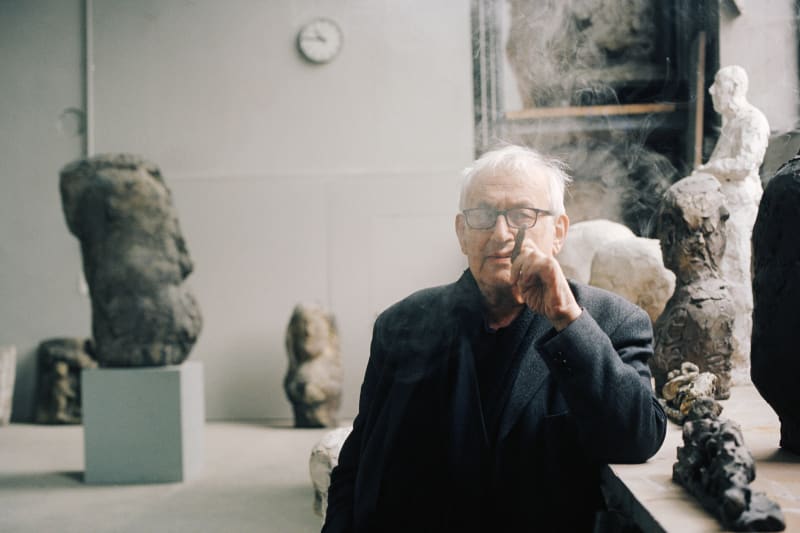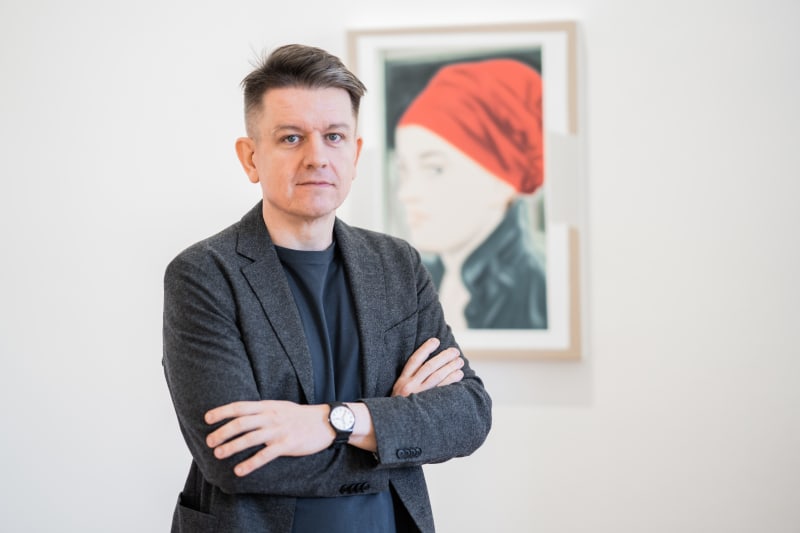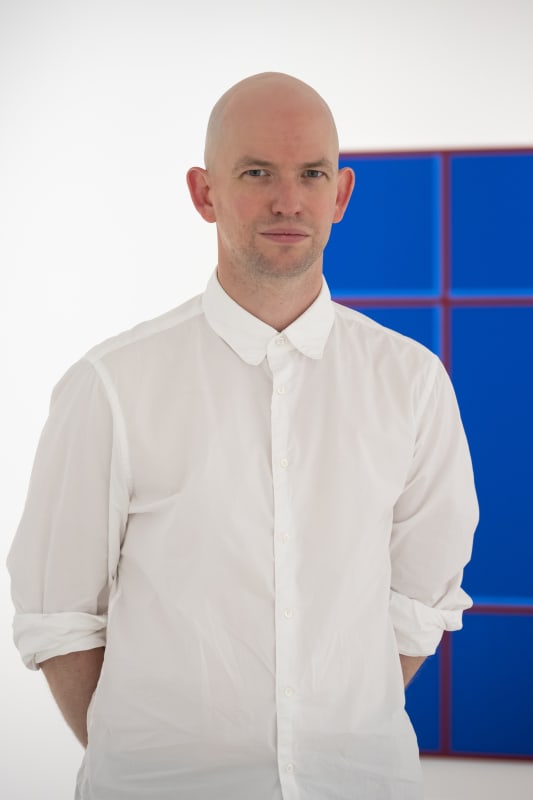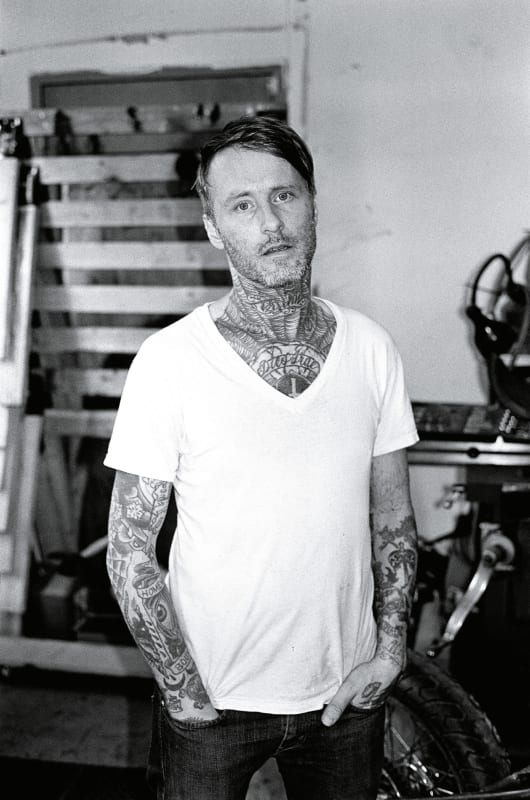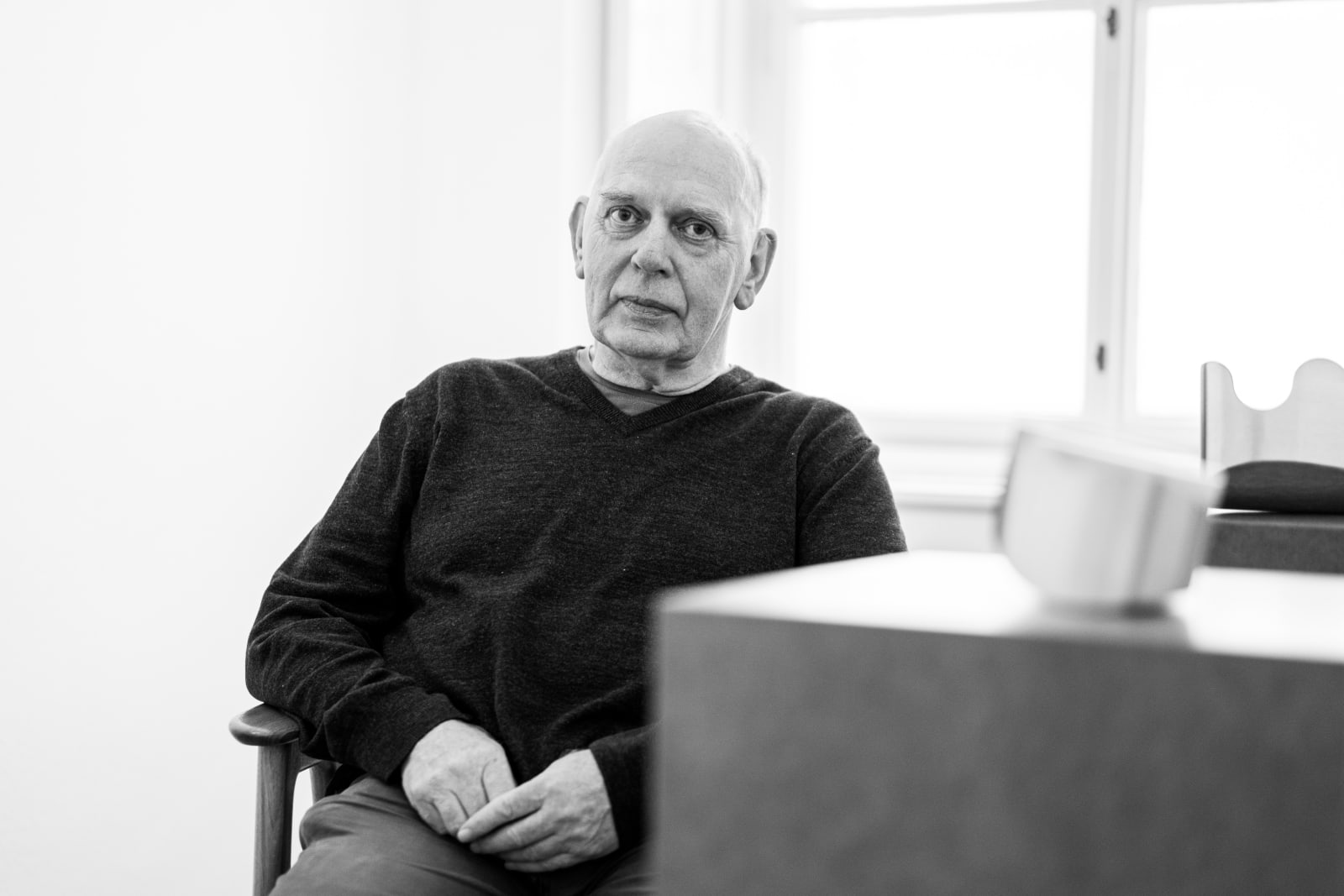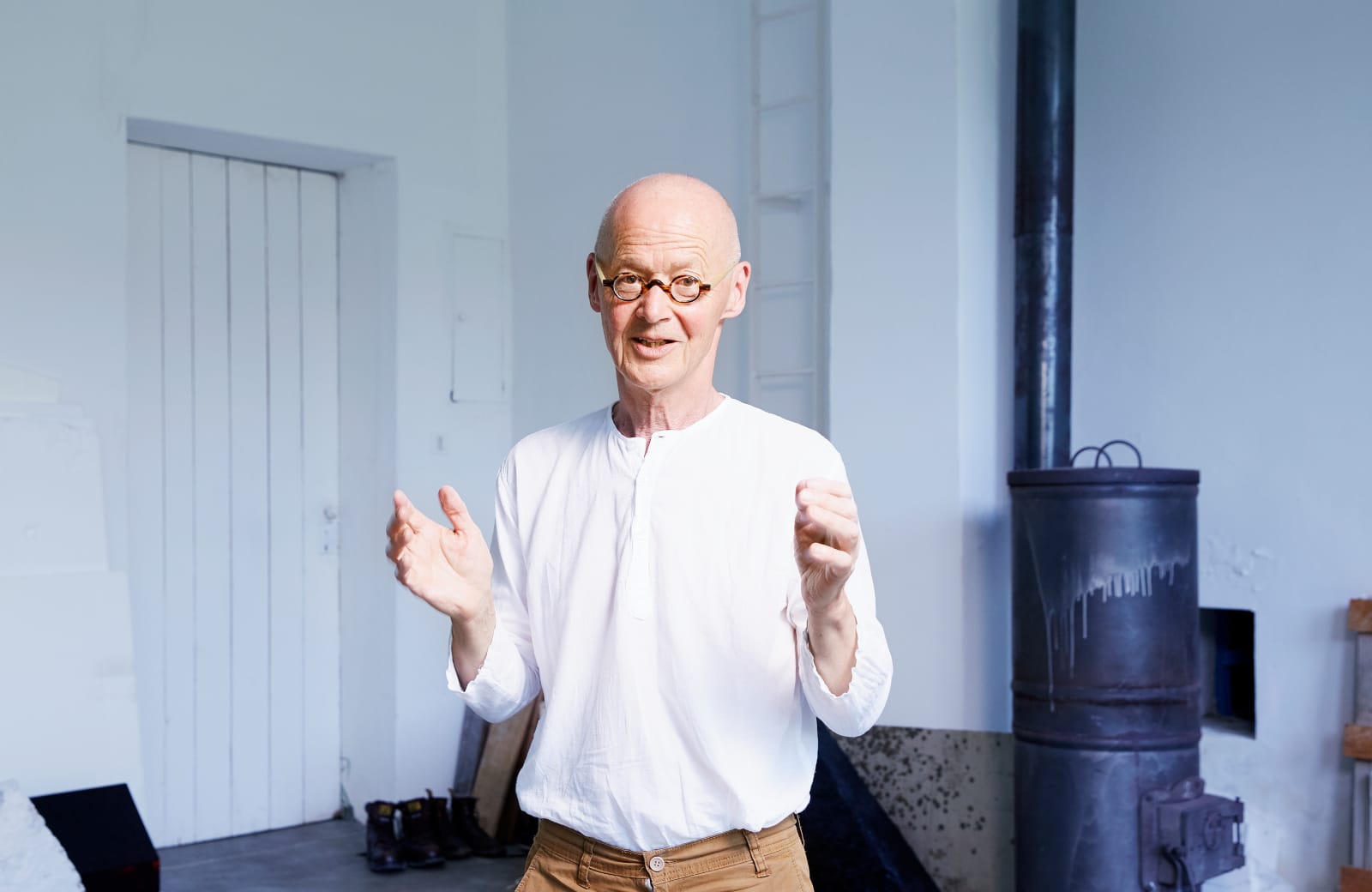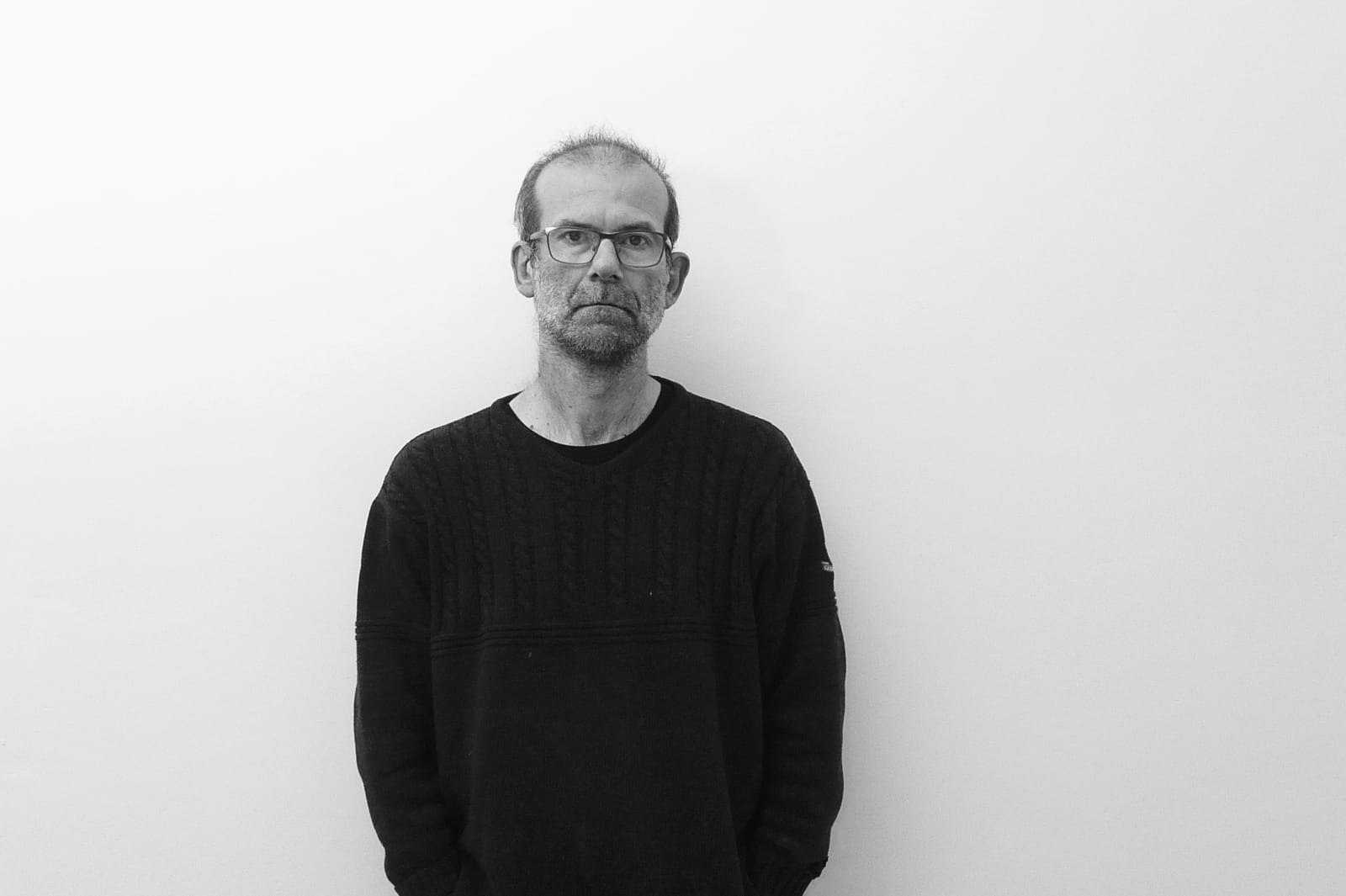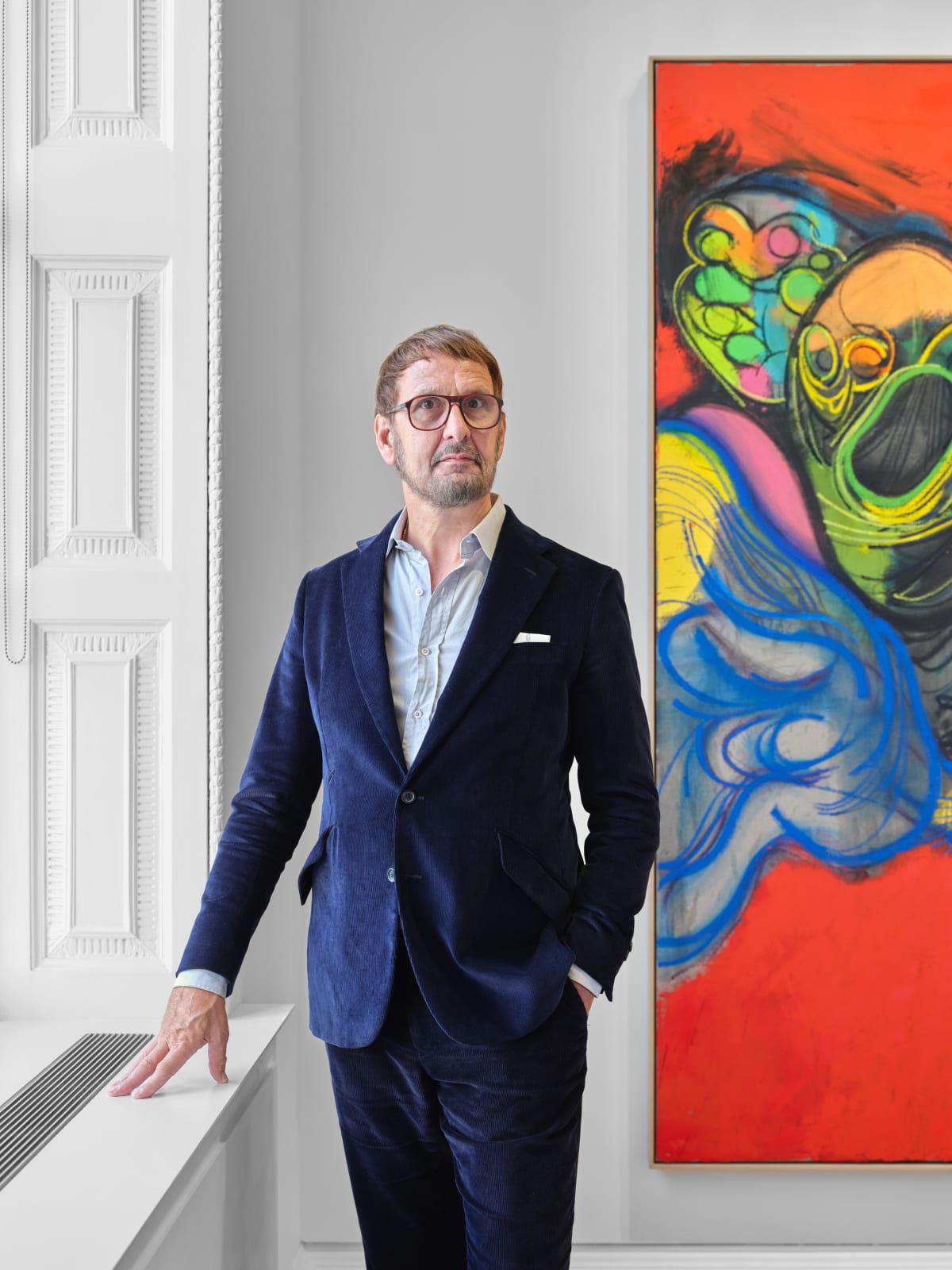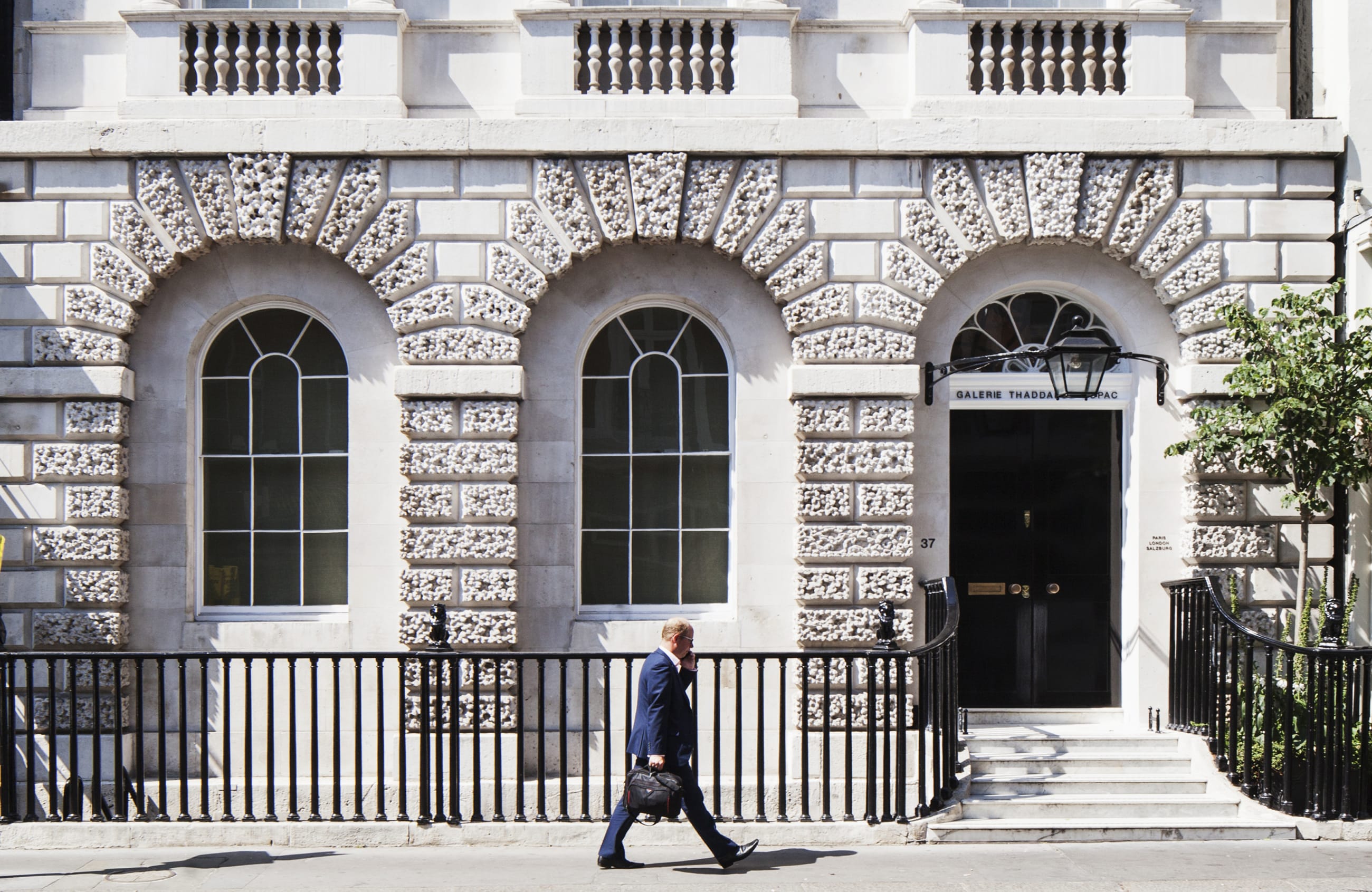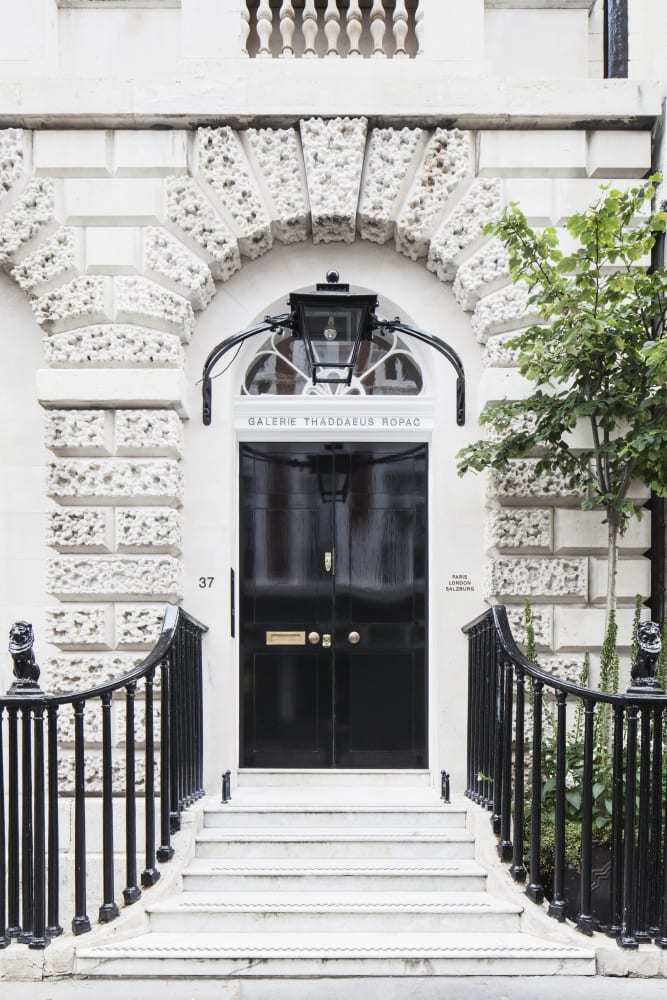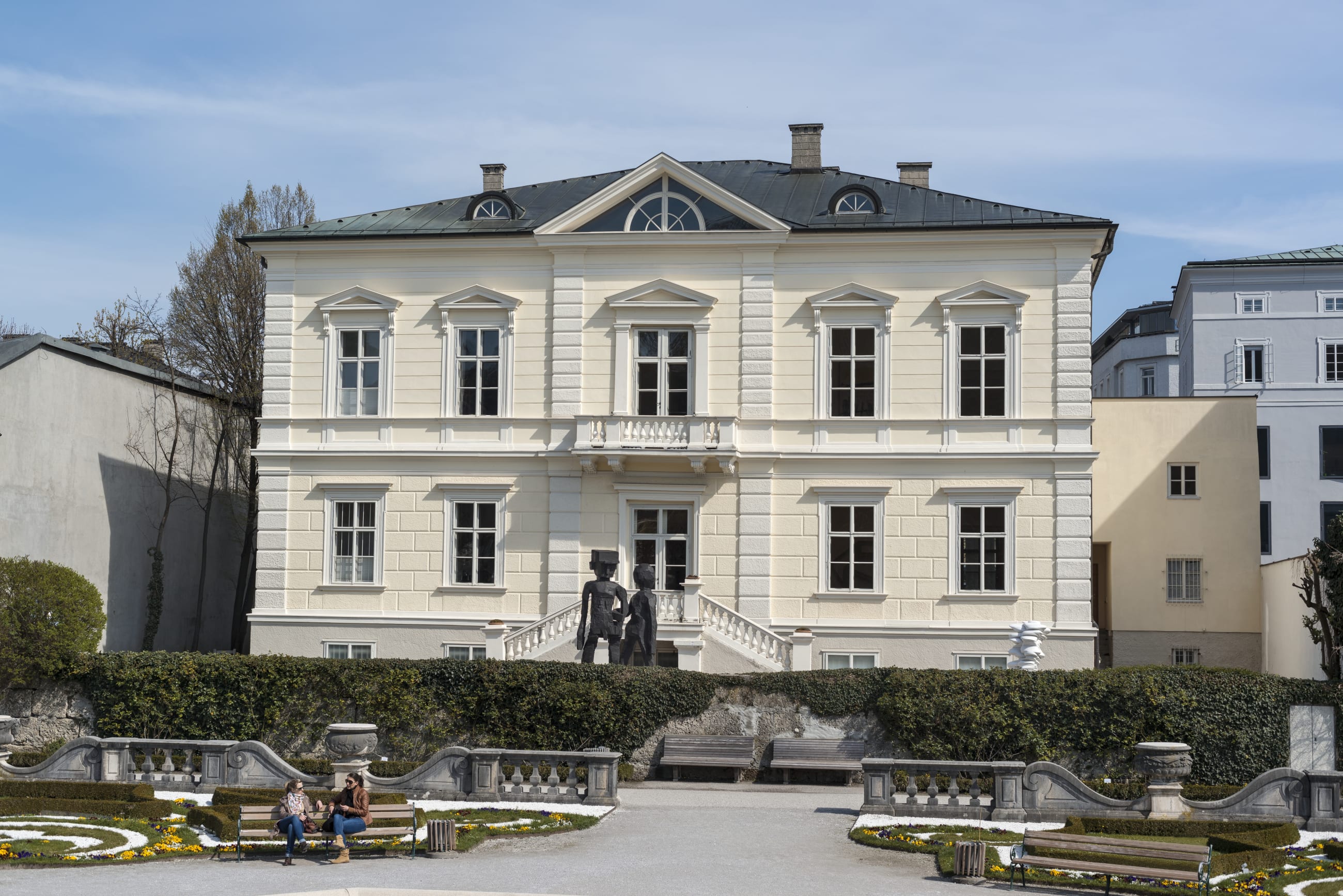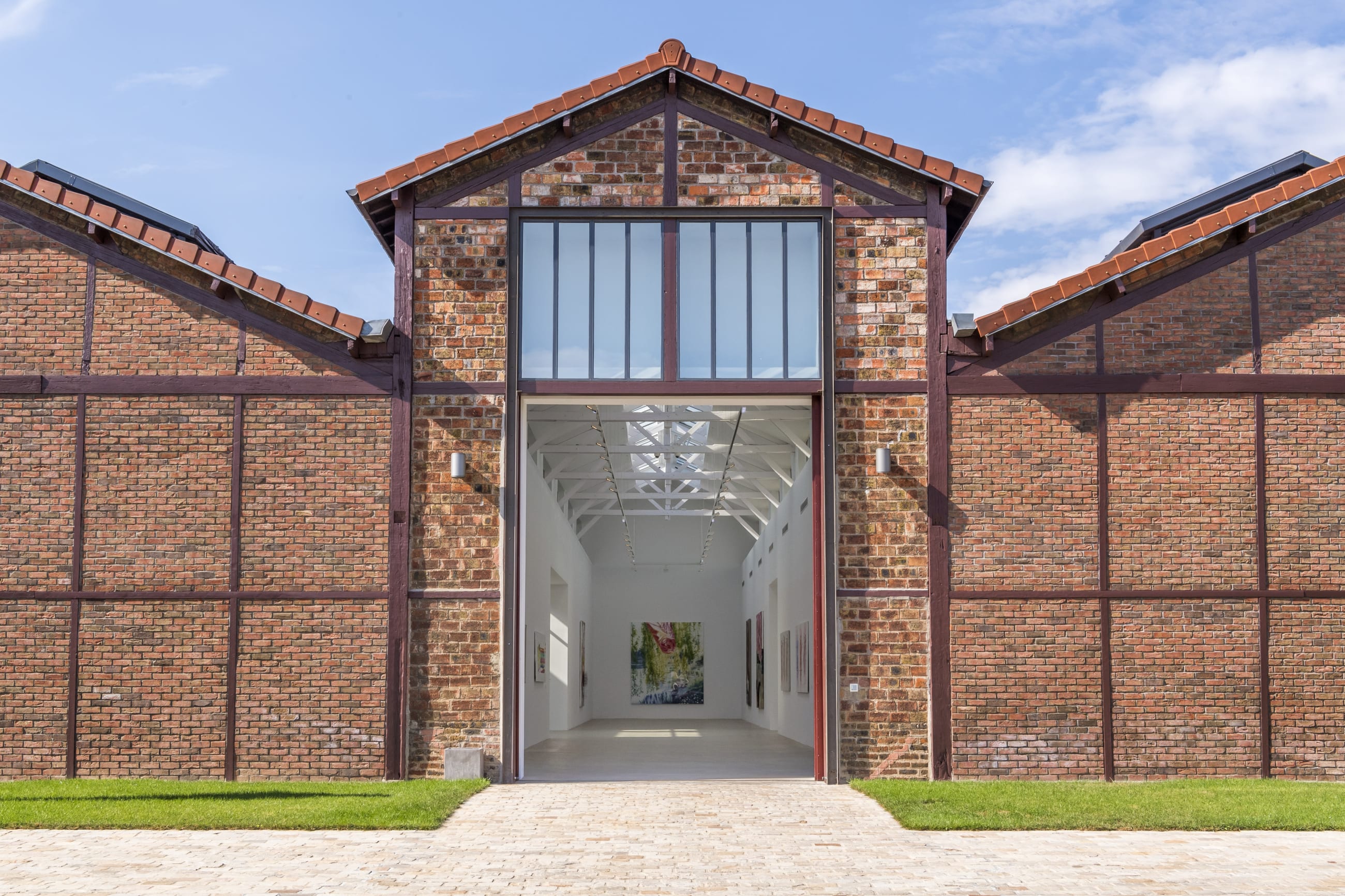Over the course of the last few years, Tom Sachs’s work has engaged with the practice of the Modernist painter and sculptor Pablo Picasso. This exhibition centres around a group of new sculptures, which Sachs created in a bricolage of found objects after the Spanish artist’s originals before casting them in bronze. The sculptures are accompanied by painted and drawn reimaginings of Picasso’s works in Sachs’s own distinctive pictorial language, which provoke visitors to reflect on what makes a painting.
톰 삭스는 최근 모더니즘을 대표하는 화가이자 조각가인 파블로 피카소의 작품 세계를 긴밀히 들여다보며 깊이 있는 탐구를 전개해왔다. 피카소에 대한 작가의 천착이 잘 드러나는 이번 전시는 신작 조각이 주축을 이룬다. 삭스는 일상 속 물건들을 활용했던 피카소의 조각 제작 방식과 궤를 같이 하며, 발견된 오브제(found object)들을 브리콜라주(bricolage) 방식으로 구축한 뒤 청동 조각으로 재탄생시킨다. 한편, 이들은 피카소의 작품을 작가만의 고유한 시각 언어로 재해석한 회화 및 드로잉 작품과 함께 전시되는데, 일련의 작품을 마주한 관객은 회화의 정의에 대해 다시금 반추하게 된다.
A relentlessly innovative and subversive sculptor, Sachs is best known for his elaborate bricolage recreations of masterpieces of art, design and engineering. In the 1990s, he spent days studying Piet Mondrian’s paintings at The Museum of Modern Art, New York, using Gaffer tape on plywood to recreate several of them. It was through these early explorations that he began to develop his methodology, and in the years since, he has continued engaging with the masters of Modernism, notably exploring the architecture of Le Corbusier for the 2010 Venice Biennale of Architecture. His works are conspicuously handmade and heighten our awareness of production techniques, in a reversal of modernisation’s trend towards cleaner, simpler and more perfect machine-made items.
끊임없이 혁신적이고 체제전복적인 조각가 톰 삭스는 예술, 디자인, 기술 공학이 낳은 걸작을 브리콜라주 방식을 활용해 정교하게 재구성한 작품으로 잘 알려져 있다. 1990년대 삭스는 뉴욕 현대미술관(The Museum of Modern Art, New York)에서 피에트 몬드리안(Piet Mondrian)의 회화를 오랜 시간 연구한 뒤, 합판 위에 개퍼 테이프(Gaffer tape, 면직물 접착 테이프)를 활용하여 몬드리안의 회화를 재구현하는 작업을 진행한 바 있다. 이러한 작가적 실험을 기반으로 고유의 작업 방식을 정립해 나간 그는 2010년 베니스 건축 비엔날레에서 르 코르뷔지에(Le Corbusier)의 건축을 탐구하는 등 모더니즘 거장들과의 관계를 꾸준히 이어왔다. 수작업의 흔적이 명확히 드러나는 그의 작품은 오차 없이, 더욱더 간단하고 완벽한 기계 생산을 지향해 온 근대화의 흐름을 뒤집으며, 작품을 마주한 이로 하여금 무엇이 어떻게 만들어지는지에 대해 돌아보도록 장려한다.
In recent years, in his New York studio, Sachs has surrounded himself with the work of Pablo Picasso, whose name is, for Sachs, ‘synonymous with art’. As well as sculpting according to traditional methods, such as carving from wood or modelling in clay, Picasso spearheaded a new approach to making sculpture from diverse found materials. These assemblages resonated with Sachs’s process of reconstructing objects he desired with the materials that were available to him and intentionally revealing his process, with all its challenges and imperfections.
삭스는 최근 몇 년간 파블로 피카소의 작품들에 둘러싸인 채 작업을 전개해왔다. 삭스에게 파블로 피카소는 단순한 예술가가 아닌, ‘예술과 동의어’인 존재다. 피카소는 전통적인 조각 기법인 목재 조각이나 점토 모델링뿐만 아니라, 다양한 발견된 재료(found materials)를 활용함으로써 조각의 새로운 지평을 열었다. 이러한 아상블라주(assemblages) 기법은 삭스의 작업 방식과도 깊이 닿아 있다. 그는 주어진 재료, 주변에 가능한 재료를 활용하여 본인이 제작하고자 하는 오브제를 재구성하며, 그 과정에서 드러나는 불완전함과 시행착오까지 흔적으로 남긴다.
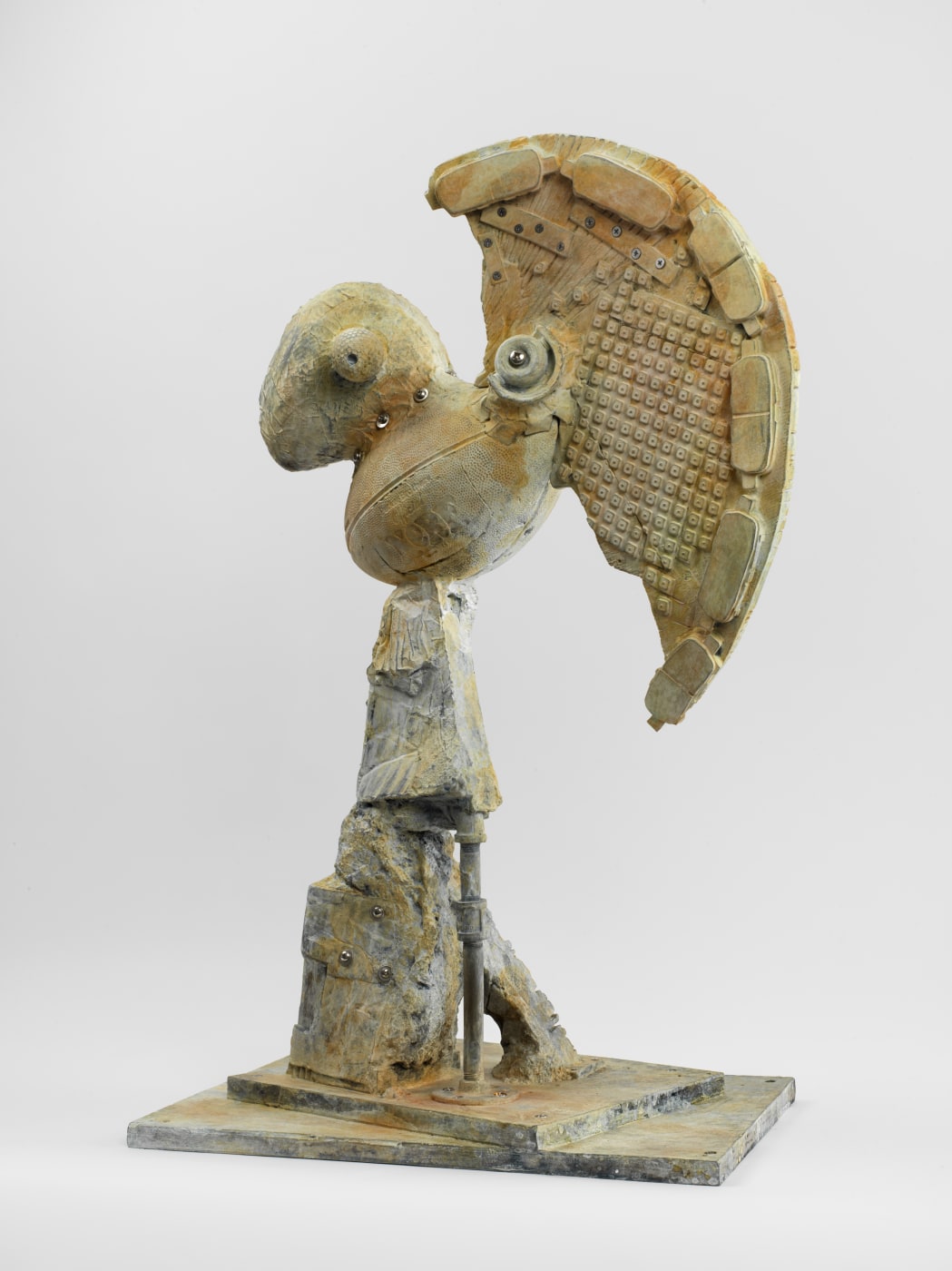
Reinterpreting Picasso’s sculptures through a contemporary bricolage – replacing Picasso’s chicken wire and nails with car parts and a Nerf football – Sachs takes up the gauntlet of the challenge his predecessor mounted against conventional artistic practices by bringing it into a contemporary context.
삭스는 피카소의 조각을 동시대적 브리콜라주 방식으로 재해석하며, 피카소가 사용했던 철사나 못 대신 자동차 부품이나 너프 풋볼(Nerf football, 너프 사에서 생산하는 미식축구공) 같은 재료를 적극 활용함으로써 피카소가 기존 조각 관습에 던졌던 도전장을 오늘날의 맥락으로 옮겨온다.
Head of a Warrior, 2024
Gesso and ferric nitrate patina on silicone
bronze with stainless steel hardware
76.2 x 45.7 x 35.6 cm (30 x 18 x 14 in)
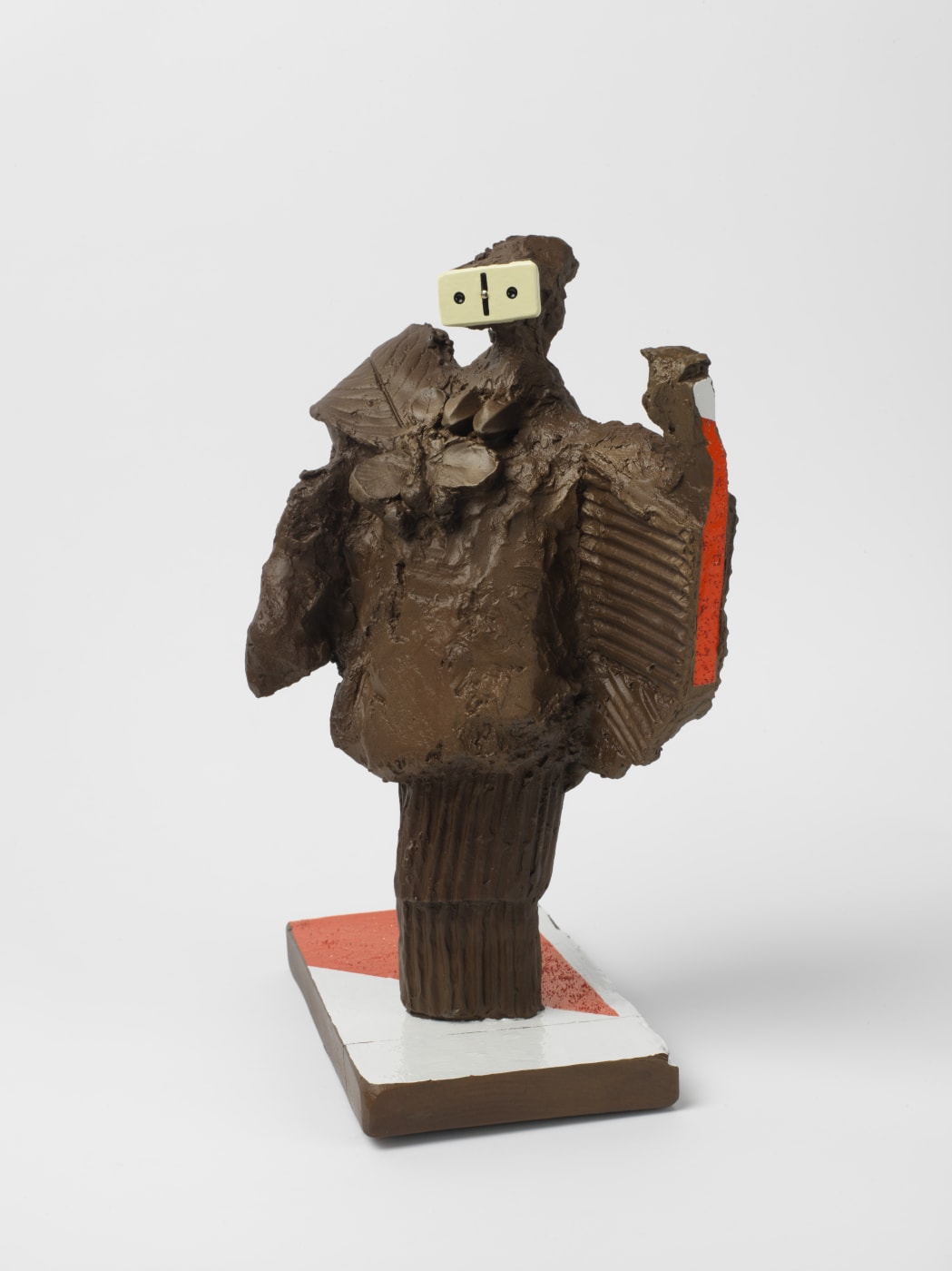
Though he constructs them like Picasso did, Sachs then casts his sculptures in bronze using the ancient lost-wax technique before giving them each a meticulous paint or patina finish, reversing the direction of the Modernist tradition to solidify the position of each of the works on view as an art object in the classical sense.
작가는 피카소처럼 조각을 구성한 뒤, 이를 고대의 실납 주조 기법인 로스트 왁스(lost-wax) 방식으로 청동 주조한다. 그리고 세밀한 채색이나 파티나(녹청 기법)를 통해 정교한 마감 처리를 더한다. 이렇게 완성되는 일련의 작품들은 고전적 맥락에서 ‘조각’이 지니던 위상을 다시금 획득할 뿐만 아니라, 모더니즘 조각의 전통적 흐름을 반전시키는 시도라는 의미를 지닌다.
Woman with Leaves, 2024
Enamel, glass beads and ferric nitrate patina on
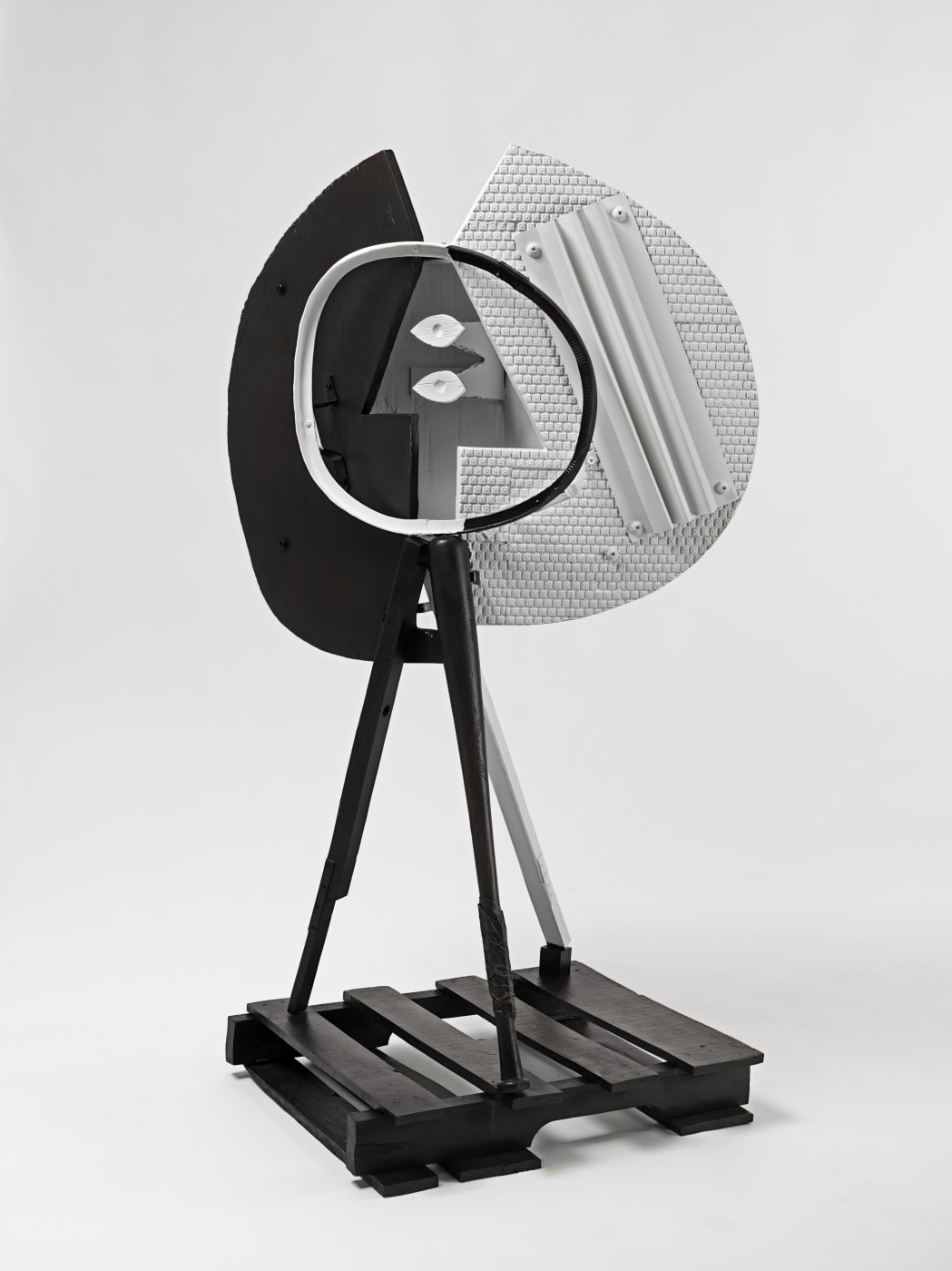
As in the work of Picasso, resemblance links unlikely objects to their new, multiplied referents, even as the traditional medium of bronze receives new life from the detritus of industry and the street. Tom Sachs’s bronzes, made after specific sculptural assemblages by Picasso [...] arrive with startling directness to engage the past in the idioms of the present.
— Christine Poggi, art historian피카소의 작품에서 발견되듯, 전혀 어울릴 것 같지 않은 사물들이 유사성을 매개로 새롭고도 다양한 대상들과 연결되고 또 확장된다. 청동이라는 전통적인 매체가 산업과 거리의 잔해로부터 새로운 생명을 얻듯이 말이다. 피카소의 아상블라주 조각을 재해석한 톰 삭스의 청동 조각은 […] 과거의 언어를 동시대 맥락 안으로 놀랍도록 명쾌하게 견인해온다.
— 크리스틴 포기, 미술사학자
Tête, 2025
Enamel and ferric nitrate patina on silicone
bronze with stainless steel hardware
147.3 x 81.3 x 66 cm (58 x 32 x 26 in)
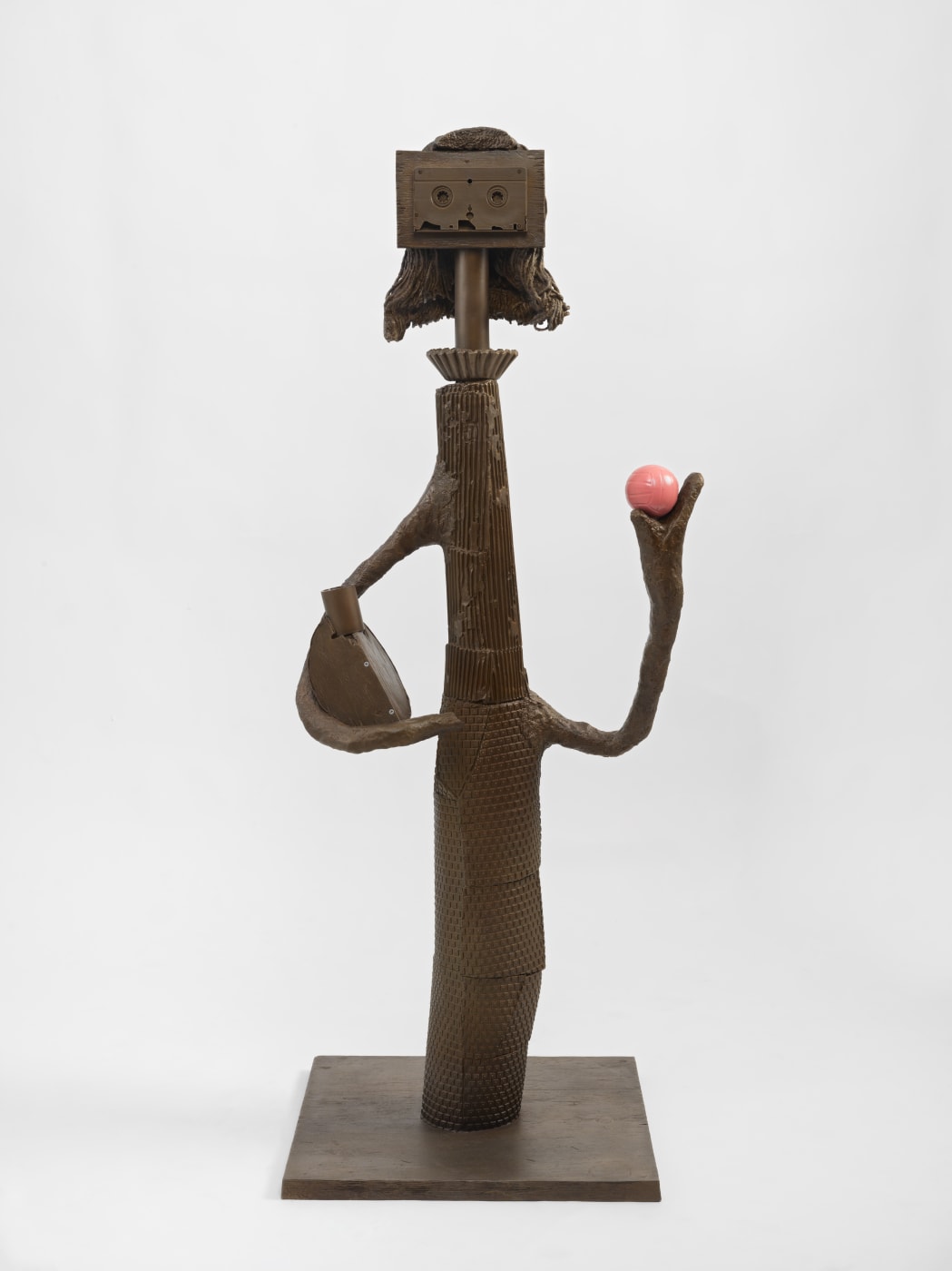
Many of the works in the exhibition stem from Sachs’s fascination with Picasso’s ‘War Years’, between 1937 and 1945. Bronze casting was almost impossible in occupied Paris, but Picasso nonetheless managed to cast several of his sculptures from the period in bronze, making Sachs’s choice of material particularly poignant.
일련의 작품들은 특히 피카소의 ‘어두운 시대’, 즉 스페인 내전과 제2차 세계대전을 관통하는 1937년부터 1945년 사이에 제작된 작품들로부터 출발되었다. 당시 독일 점령 하에 있던 프랑스에서 청동 주조란 거의 불가능에 가까웠다. 하지만 피카소는 그럼에도 불구하고 몇몇의 청동 조각들을 제작해냈고, 이는 삭스가 해당 재료를 사용하게 된 데 큰 영향을 미쳤다.
Woman with Orange, 2025
Enamel and ferric nitrate patina on silicone
bronze with stainless steel hardware
180.3 x 73.7 x 63.5 cm (71 x 29 x 25 in)
This period of scarcity was also when Picasso fully embraced the found object, establishing the foundations of the then-nascent artistic readymade: the same lineage Sachs inscribes himself in a century later. This history gives Sachs’s use of found materials in his Picasso sculptures a particular resonance. As Ailsa McDougall writes in the fanzine accompanying the exhibition, ‘Picasso’s war-era assemblages emerged from a crucible of resilience in scarcity; Sachs’s from abundance, from a mountain of material possibility, where the same scrap metal that was once snapped up and melted down instead accumulates in landfill – unless Sachs gets his hands on it first.’
또한, 이 시기는 피카소가 본격적으로 ‘발견된 오브제’를 조각의 재료로 수용하기 시작하며 초기 레디메이드(readymade) 개념의 기틀을 마련했던 때로, 이는 오늘날 삭스가 이어오고 있는 계보이기도 하다. 그리고 바로 이 지점에서 삭스가 그의 피카소 조각 연작에서 사용한 재료들이 더욱 깊은 반향을 일으킨다. 전시와 연계하여 발간된 팬진에서 에일사 맥두걸(Ailsa McDougall)은 이에 대해 ‘전쟁기에 제작된 피카소의 아상블라주가 결핍 속에서도 견디고 만들어내려는 회복력이 비롯되었다면, 삭스의 작품은 과잉에서 비롯된다. 한때는 재빨리 회수되어 녹여졌던 고철이 이제는 삭스가 먼저 주워가지 않으면 이내 매립지에 쌓여버리고 만다’고 덧붙였다.
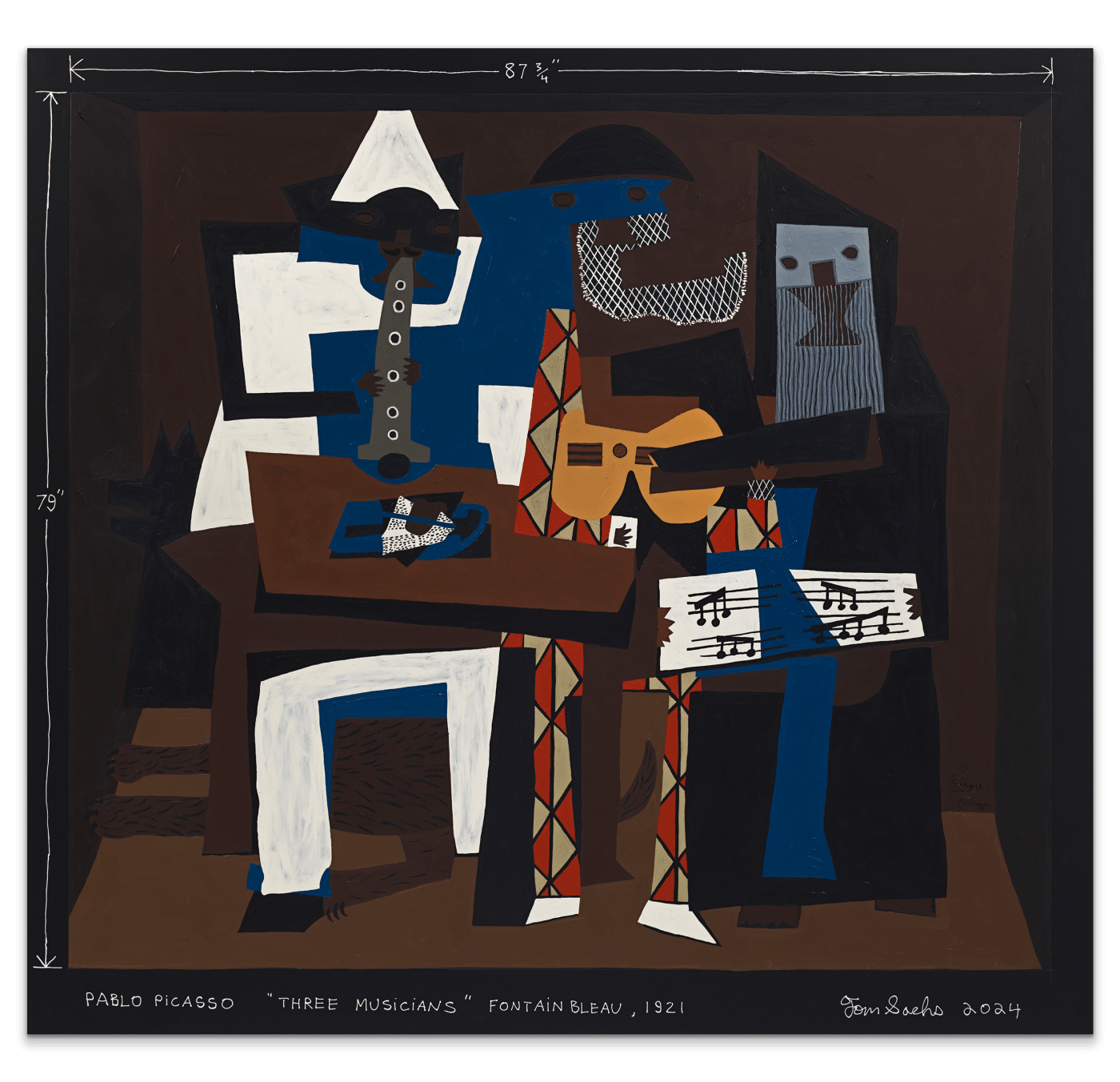
Painting is a medium Sachs has returned to several times over the years, and the paintings in this exhibition were conceptualised in a period of focus on drawing and colour for the artist. Exploring the lines and forms used by Picasso, Sachs found parallels with his own practice. The thick lines that recur in Sachs’s work, originating from the influence of American graffiti and street art, mimic the solid black linework that delineates many of Picasso’s figures.
회화는 삭스가 수년에 걸쳐 작업해 온 매체로서 이번 전시에서 선보이는 회화들은 작가가 특히 드로잉과 색채에 집중하던 시기에 구상되었다. 삭스는 피카소의 회화를 연구하며 자신의 작업과 유사점을 발견했다. 삭스의 작품 전반에 걸쳐 등장하는 굵은 선은 미국 그래피티와 스트리트 아트에 뿌리를 둔 것으로, 피카소가 ‘어두운 시대'에 제작한 작품에서 인물의 형상을 구획하는 데 사용했던 두터운 흑선을 연상시킨다.
Three Musicians, 2024
Synthetic polymer and Krink on canvas
226.1 x 243.8 cm (89.02 x 95.98 in)
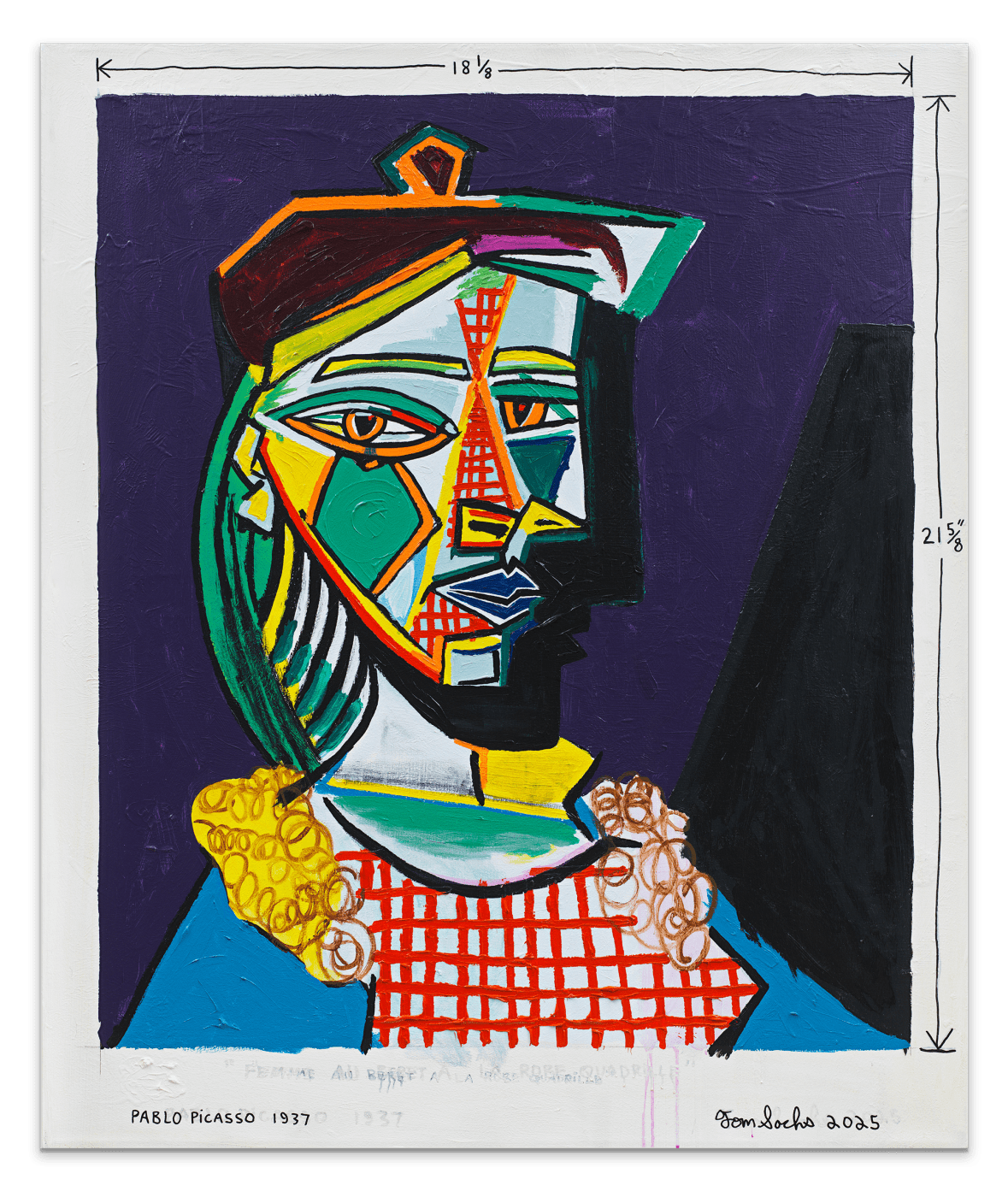
Sachs credits each work to Picasso using their original dates and titles, while also adding a new frame around them and his own signature in his characteristic black brushwork – additions that allow him to recontextualise them and make them his own. The traces of each work’s creation, meanwhile, are left apparent, with measurement lines erased and repainted.
삭스는 원작의 제목과 연도를 회화에 명시함으로써 피카소의 작품에서 비롯되었음을 환기시킬 뿐만 아니라, 회화 주변으로 프레임을 추가하고 특유의 검은 획으로 서명을 남김으로써 작품을 새로운 맥락으로 비추어본다. 회화의 규격을 측정한 선이나 치수 등 작업의 흔적이 고스란히 남겨진 일련의 작품들은 작가의 해석이 더해진 고유한 화면이 된다.
Femme au Béret à la Robe Quadrillée, 2025
Synthetic polymer and ink on canvas
121.9 x 101.6 cm (48 x 40 in)
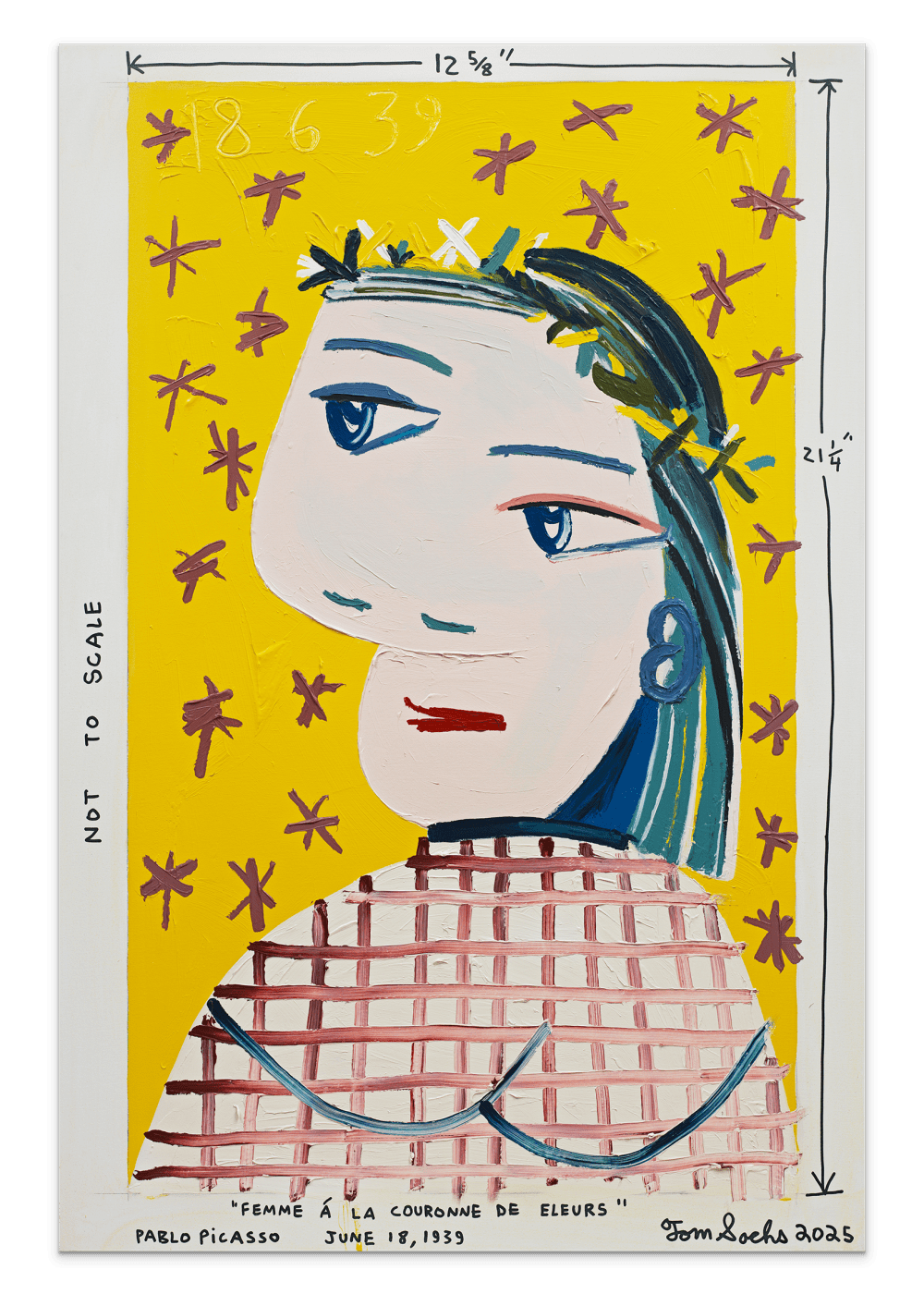
Where previous examples of Sachs’s paintings after Picasso recreated the Spanish master’s works at their original scale, in these recent examples, Sachs dramatically scales up some of the paintings, drawing attention to the process of reproduction. As the artist says: ‘“Painting” is a verb. It’s an action, it’s an activity. All these paintings are about the process of making them more than the finished product.’ By encouraging visitors to engage with this process, Sachs invites them to examine their own relationship to art-historical artefacts.
이전 회화에서는 스페인 거장의 원작을 본래 크기로 구현했다면, 최근 작업에서는 일부 회화를 과감하게 확대함으로써 재현 과정 자체에 더욱 주목한다. 그는 이에 대해 “회화(painting)는 동사"라고 이야기하며, “작업은 행위 그 자체다. 이 모든 회화는 완전한 결과물보다 그것이 만들어지는 과정에 대한 것"이라고 설명한다. 삭스는 관람객이 작품의 제작 과정을 적극적으로 인지하고 참여할 수 있도록 유도하며, 예술사적 오브제와 관람객 사이의 관계를 새롭게 성찰해 볼 수 있는 기회의 장을 마련한다.
Femme à la Couronne de Fleurs, 2025
Synthetic polymer and ink on canvas
152.4 x 101.6 cm (60 x 40 in)
What Sachs is trying to do is to gain insight into the transition from art to iconic commodity – to understand how/whether Picasso’s art transcends the contextual noise that comes with being promoted/demoted from painting to mousepad.
— Dakin Hart, curator
삭스는 예술이 일종의 아이코닉한 상품으로 전환되는 과정에 주목하고, 그에 대한 통찰력을 얻고자 시도한다. 즉, 피카소의 예술이 회화에서 마우스 패드로 전환될 때, 그 과정 전후로 발생하는 맥락적 논쟁을 어떻게 초월할 수 있을지, 혹은 초월하는지를 이해하고자 한다.
— 다킨 하트, 큐레이터
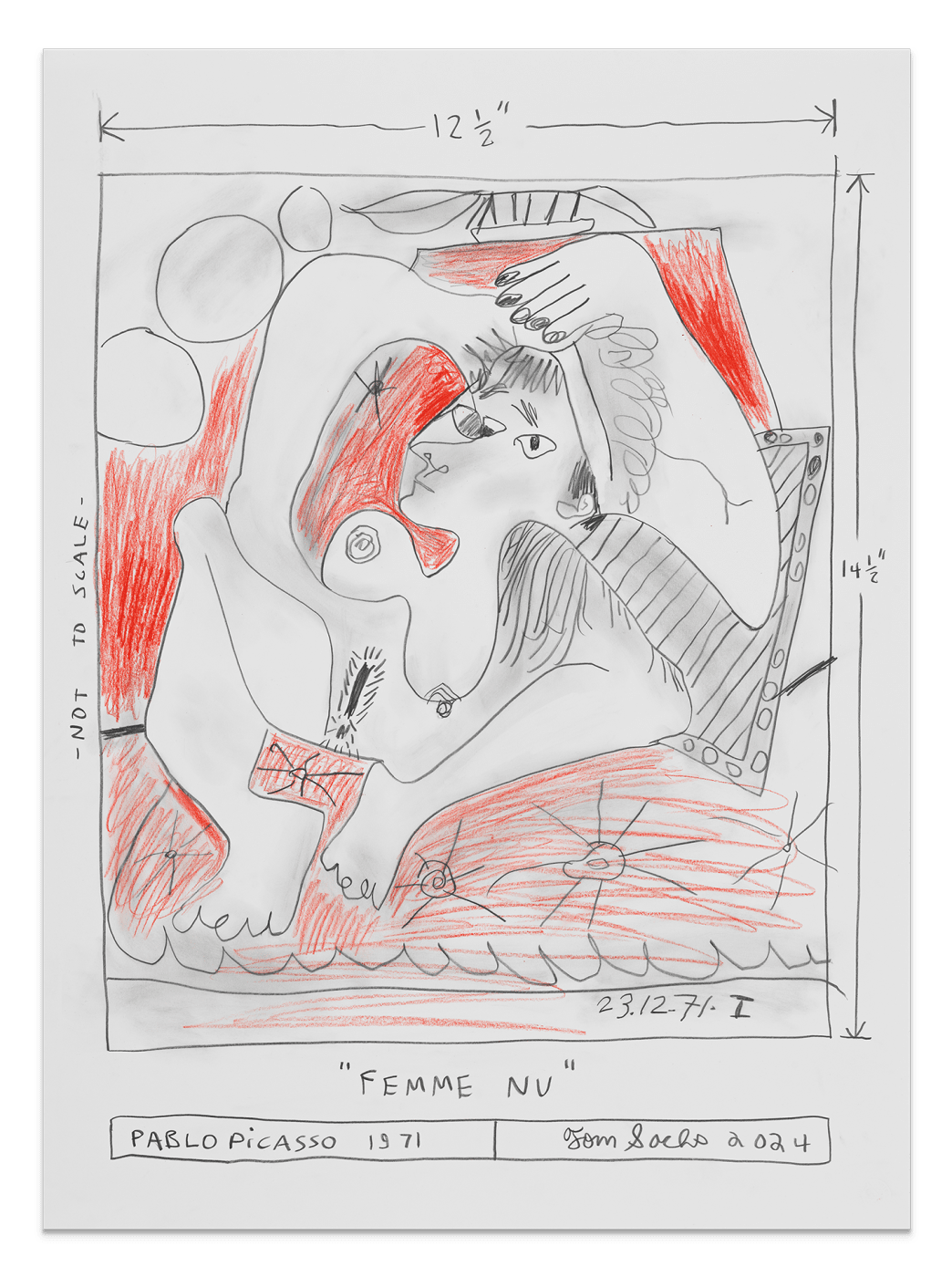
The exhibition brings Sachs’s explorations of Picasso across mediums – sculpture, painting and drawing – into dialogue, but, for the artist, all the works on view are sculptures. As he explained of his Picasso paintings: ‘I always think about sculpture first. And these, sure, they’re paintings, it’s paint on canvas, but really they’re built the way a sculpture is built. And I don’t really make a distinction between a painting and a sculpture or a shoe or a video [...]. It’s all sculpture to me, in that it’s built. The evidence of the making is always in the finished product.’
이번 전시에서 선보이는 회화 및 종이 작품은 작가가 오랜 시간 진행해 온 회화, 드로잉, 색채에 대한 탐구의 연장선이다. 하지만 작가에게 전시된 모든 작품은 조각이다. 피카소 회화 연작을 선보이며 그는, “나는 언제나 조각부터 생각한다. 물론 이 작품들은 회화다. 캔버스에 물감으로 그린. 그렇다고 해서 이들이 만들어진 방식과 다른 것은 아니다. 나는 회화와 조각, 더 나아가 신발이나 영상 [...] 내겐 전부 조각이다. ‘만들어진 것’이라는 점에서 말이다. 작업에 흔적은 언제 결과물에 드러난다’라고 설명했다.
Femme Nue, 2024
Graphite and china marker on paper
76.2 x 55.9 cm (30 x 22 in)
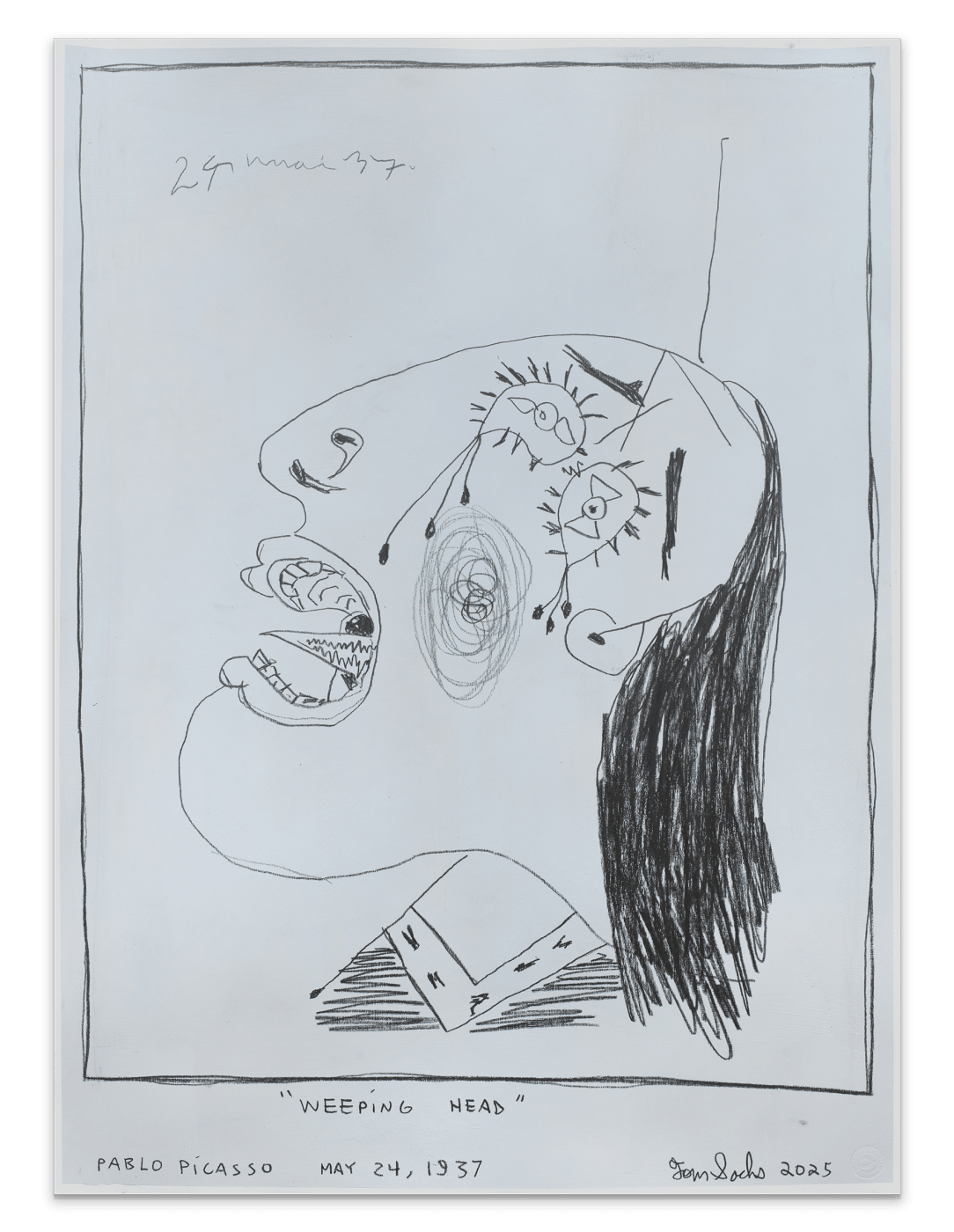
The women who were frequently included in Picasso’s works, often through the lens of their relationships with him and as symbols bearing the world’s pain, reemerge in several of Sachs’s. Sachs’s approach, though, is a direct challenge to Picasso’s: in the words of The New Yorker writer Naomi Fry, ‘For Picasso, these painted femmes were muses, forever defined and confined by the artist and his work. In Sachs’s reimagined Picassos, however, it’s not the women whom he attempts to pin down—it’s Picasso himself.’
피카소 작품 전반에 걸쳐 여성의 형상이 자주 등장하는데, 이들은 작가와의 관계에서 비롯되기도, 혹은 세상의 아픔을 짊어진 상징적 인물로 자리하기도 한다. 그리고 이들은 삭스의 화면에도 종종 나타난다. 하지만 삭스가 인물에 접근하는 방식은 피카소와 결을 달리한다. 이에 대해 더 뉴요커(The New Yorker)의 비평가 나오미 프라이(Naomi Fry)는 “피카소의 화면 속 여성들은 작가에 의해, 작품 안에서 정의되고 통제되는 그의 뮤즈다. 그러나 삭스가 재해석의 과정을 통해 만나고자 했던 대상은 화면 속 여성이 아닌, 바로 피카소이다.”라고 설명한다.
Weeping Head, 2025
Gesso, synthetic polymer and graphite on paper
76.2 x 55.9 cm (30 x 22 in)
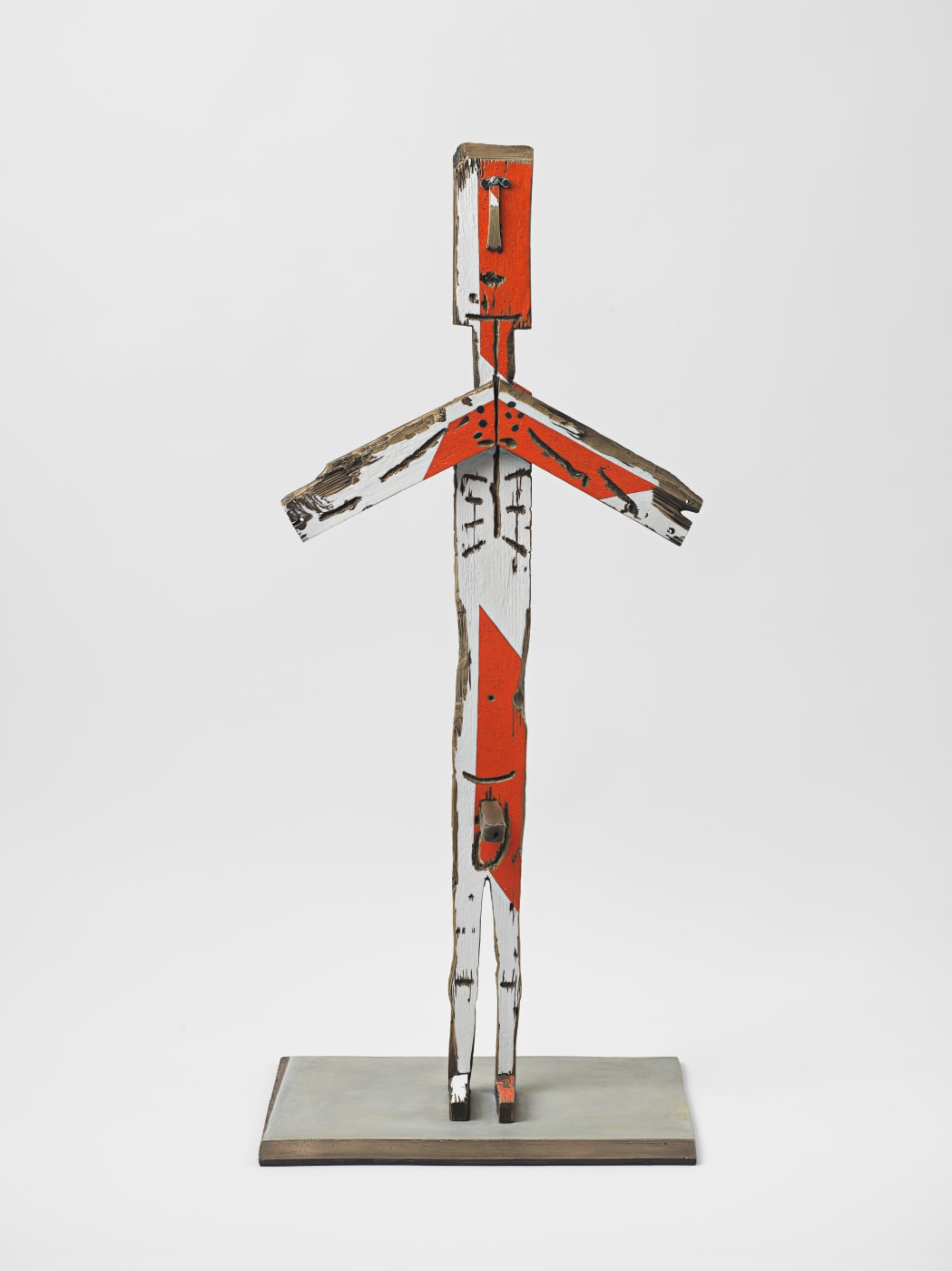
Picasso: the word is synonymous with art. For years, I’ve studied so many systems. McDonald’s, architecture of Le Corbusier and the Bauhaus, military-industrial systems. For me, it was a way of trying to understand Picasso the way I would understand a battleship or a skyscraper. To understand how something is made. So, working with Picassos and understanding them is a way of taking them apart.
— Tom Sachs
피카소: 이 단어는 예술과 동의어이다. 나는 수년에 걸쳐 수많은 시스템을 연구해왔다. 맥도날드, 르 코르뷔지에와 바우하우스의 건축, 군사-산업 시스템 등 말이다. 나는 전함이나 마천루를 이해하는 방식으로 피카소를 이해해 보고자 한다. 무언가가 어떻게 만들어지는지 이해해 보는 것이다. 따라서 피카소를 통해 작업하고, 피카소를 이해하기 위한 일환으로 피카소를 파헤쳐 분해한다.
— 톰 삭스
Young Man, 2024
Enamel, glass beads and ferric nitrate patina on
A fanzine, featuring documentation from Tom Sachs’s studio and an essay on his new works, has been published to accompany the exhibition.
전시와 연계하여 톰 삭스 스튜디오의 아카이브 자료와 작가의 신작에 대한 에세이를 수록한 팬진이 발간되었다.
